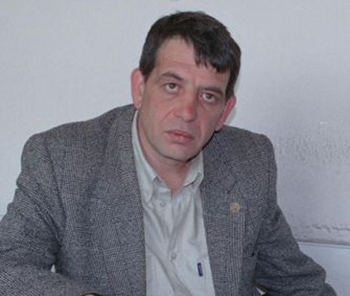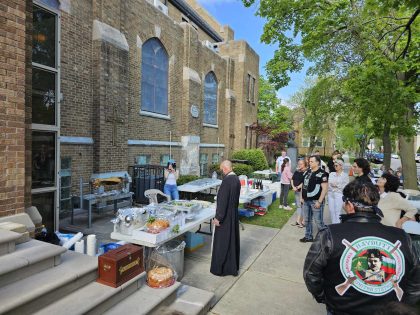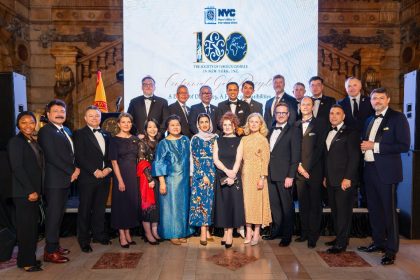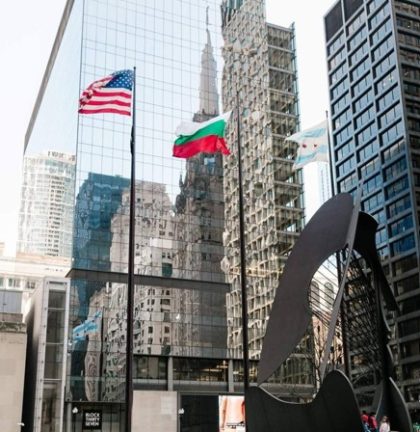Integrated Robotic Systems for Humanitarian Demining and Integrated Robotic Systems for growing organic fruits and vegetables in an open-air environment for fresh consumption and their delivery – interconnection
Report of Annual Symposium of 12th IARP WS HUDEM’2014
(23-25 April 2014, Zadar, Croatia)
.
Author: Marin Midilev

Abstract: Minefields, which have remained uncleared after military conflicts and wars, still can be found in more than 2/3 of the countries in the world. Basically, fertile areas are being mined. More than 1.5 billion people worldwide suffer from malnutrition. An article from the Institution of Mechanical Engineers reports that between 30 and 50 % of all food produced in the world is thrown away. This is approximately between 1.2 and 2 billion tons of wasted food annually. Due to bad size or bad appearance 30 % of the vegetables in the United Kingdom aren’t harvested at all. Almost half of the food bought in the United Kingdom and the USA is usually discarded by the consumers. On a world scale about 550 billion m³ water is wasted annually for watering crops which in fact never reach the human mouth. The energy expenditure used for delivery surpasses several times the energy expenditure used for growing fruits and vegetables!
The solution to the problems mentioned above lies in the design and commissioning of Integrated systems for growing organic fruits and vegetables in an open-air environment and their delivery, with the help of existing technologies, technological solutions and ready-to-use elements. In order to achieve greater effectiveness it is necessary to unify the Integrated Manufacturing Systems according to the types of fruits and vegetables as well as the geographical features! The design and commissioning of Integrated Manufacturing Systems is appropriately to be used on a large unoccupied space or on areas already cleared of minefields by the Integrated Robotic Systems for Humanitarian Demining. Integrated Robotic Systems for Humanitarian Demining as principles of operation and organizational structure are versions of Integrated Systems for growing organic fruits and vegetables in an open-air environment for fresh consumption.
An integrated system for picking and delivering of cherry fruit can be considered as a basic project.
The annual world production (as of 2007) of cultivated cherry fruit is about two million tonnes. Around 40% of world production originates in Europe and around 13% in the United States.
The fruits of cherries are at a height of several metres from the ground depending on their sort. Cherry picking in Europe starts in the beginning of April and ends by the end of June. It is mainly done by hand. Mechanical picking is based on the vibrational technology, which shortens the life of the trees and most of
the fruits get damaged.
As for the robotic fruit picking, there are developments based on mobile robot platforms with mechanical arms equipped with harvesting instruments.
Robot fruit picking can be arranged on the base of air multi rotor drones (VTOL technologies – drones). The potential of the drones is to work together simultaneously and form particular interconnected configurations in the air, which allows the fruit picking robot, the qualification system, the storage system and the system for wrapping transport to be directly connected. The mobile robot platform serving the drones can also serve as a platform for the drones to fly off and land and as a temporary storage of containers – boxes for storage of cherries and energy centre as well (Option 1 – management and transmission of electrical energy through cables, Option 2 – independent management of the drones with a periodical change or battery charging needed). The automated fruit picking drones are necessary to be supplied with automatic pilot. The transfer of picked production to the delivery means of transport out of the plantation can be arranged with the help of another robotic platform to a temporary storage.
From the temporary storage to end customers within a radius of 16 km – families, restaurants, vending machines, delivery can be arranged with drones. See references [4], [5],[6], [7]. For long distances to the scheme of delivery it is proper drones technologies of Black Knight Transformer’s type [8] and others developed by the TIRAMISU partners to be brought in. The delivery is made to the end storehouse. From the end storehouse to the end customer the delivery can be made according to the described scheme at short distances. To the temporary storage there should be a photovoltaic plant for battery charge as well as a centre for management where the operators and ground pilots will work. Navigation should be based on Galileo, Probe –V and other programs of the European Space Agency ESA. In order to accomplish the described scheme, a specific wrapping for packing the picked production is needed.
An integrated system for mine fields demining can have the same basic elements as a final point of each mine is the utilization technology. The utilization technology can be stationary or mobile, but in most cases it is at a long distance from the minefield. Because all types of mines are standardized, an assembly
line for demining and disassembling of preliminarily fool-proof infantry and tank mines. Demining can be done by preliminarily packaging based on digging in a cylinder around the mine. Demining is a kind of
packaging before taking the mine out of the ground. The instrument for mine packaging can be carried by drones. Other options are using a mobile robot platform with a mechanical arm or a person to set it on the
ground above and around the tank or infantry mine. The possibility of the drones to work together simultaneously allows them to be used for detecting tank or infantry mines – Geo radar GPR, metal detectors, etc. By using an integrated system for demining, the time taken for clearing minefields is shorter.
In reverse order, the main elements of the integrated technology for minefields demining can be used for creating fruit growing plantations and planting trees. The means of transport are used by the seedlings
production enterprise to the field. Each tree is grown and transported in a pot made of bio plastic.
The creation of integrated systems for organic production of fruits and vegetables in open areas and their delivery is necessary to start a project for building a Technology Park on FP 8 – Horizon2020 with:
Main partners – the TIRAMISU partners.
Appropriate area – the area of Dimitrovgrad municipality, Haskovo district Regional planning – South Central region, Bulgaria
Priorities [9]:
a. European production region with the best flavor qualities of fruit and vegetables – Thracian lowland
b. Existence and construction of the necessary infrastructure
c. Existence of available unused areas where the production can be arranged
d. Other
References:
[1] http://www.eu-robotics.net/cms/upload/PDF/SRA2020_0v42b_Printable_.pdf
[2] http://www.service-robots.org/
[3] http://en.wikipedia.org/wiki/Cherry#External_links
[4] https://www.bordeaux.inra.fr/cherry/index.html
[5] http://www.lakemaidbeer.com/
[6] http://www.smh.com.au/technology/sci-tech/push-for-liftoff-on-drone-deliveries-in-australia-20131014-2vixx.html
[7] http://news.cnet.com/8301-11386_3-57601531-76/drones-in-china-deliver-packages-even-a-birthday-cake/?goback=%2Egde_84160_member_271531863#%21
[8] https://www.advancedtacticsinc.com/
[9] http://www.hs.government.bg/images/stories/2013/07/dok/osrfin1.pdf



